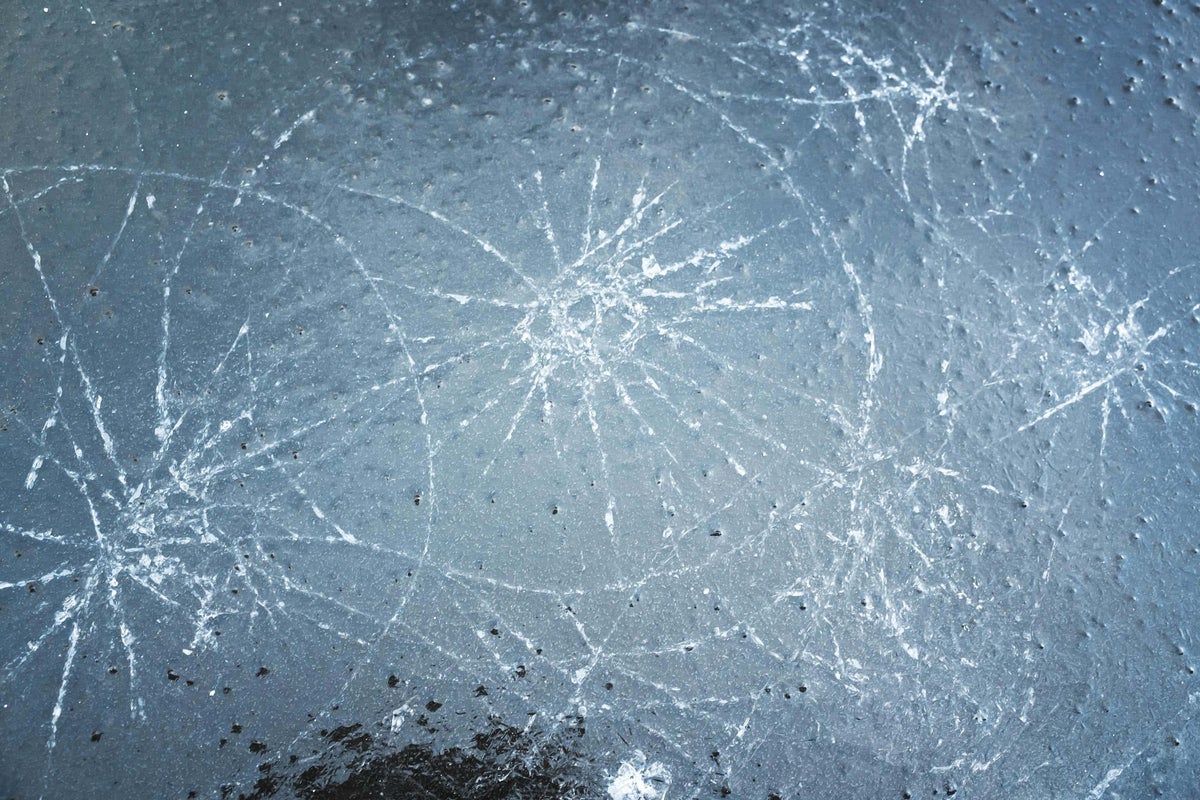
Although most adults aren’t keen on the current freezing conditions, cold, crisp weather can be exciting for children.
But while snow and ice can look pretty, both they and the bitter cold that comes with it can be very dangerous – something that was brought into sharp focus when four young children died last month after falling through ice on a lake in Solihull.
Nathan Davies, head of policy at the Royal Society for the Prevention of Accidents says the tragedy acted as a “solemn reminder” to talk to children about the dangers present in cold weather.
Here are some to be aware of…
1. Frozen lakes
Children are often drawn to the ice on lakes and reservoirs, with no sense of the danger that lurks beneath the seemingly hard but often extremely brittle frozen surface.
“Ice can be fascinating for children – the eerie sound of stones skipping over the surface and the crack when your foot breaks through the ice on the puddle,” says Katrina Phillips, chief executive of the Child Accident Prevention Trust (capt.org.uk). “But ponds, reservoirs or brooks are no place for playing with ice. It can be tempting to test out the ice around the edges, but it’s easy to fall through into icy water that quickly causes hypothermia.
“Talk to your child about staying well back and never standing on a frozen pond or brook, no matter how thick the ice seems.”
Davies adds: “As parents, it’s easy to focus talks with our children on the ‘obvious’ things that might put them at risk, such as talking to strangers and looking both ways before crossing the road. But water safety, particularly cold water safety, is an absolutely vital part of everyone’s survival kit, children and adults alike.”
He warns that while ice on a lake may look solid from the surface and around the edges, it’s unlikely to hold a person’s weight across the entire surface. “We urge everyone to be aware of the dangers and to not go on to frozen bodies of water.”
The two key dangers of frozen lakes and reservoirs include cold water shock and drowning. Cold water shock causes the blood vessels in the skin to close, which increases the resistance of blood flow and heart rate.
Davies explains: “Once you start going into cold water shock, your ability to swim will be severely impacted, dramatically raising the risk of going into cardiac arrest and drowning.”
He advises parents to explain it in an age-appropriate manner, perhaps by drawing younger children a picture of a frozen lake and highlighting what’s underneath the top icy layer. “This can help them understand that they could fall through the ice and drown at any minute,” he says. “For others, it could be as simple as using play as an educational tool, using toys and dolls to enact an emergency scenario.”
Teenagers might need stronger tactics though.“They often know the dangers but don’t necessarily think they’ll be affected by them,” Davies points out. “We advise reminding them of the risks of icy open water and making those risks real by showing them relevant news articles and videos.”
2. Hypothermia
Hypothermia is a dangerous drop in body temperature, and is a medical emergency that needs to be treated in hospital if it drops below 35 degrees C, warns the NHS.
Dr Stuart Sanders, a GP at The London General Practice (thelondongeneralpractice.com), says a child’s normal core temperature Is around 37 degrees, but if it drops below this, they’ll start feeling cold, and may start to shiver in an attempt to get warmer. But if there’s a lengthy exposure to cold temperatures some may experience hypothermia.
“This is when their body loses heat quicker than it produces it, causing the body temperature to drop extremely low,” he says. “This can also affect their cognitive performance, making them feel drowsy and confused, and cause feelings of weakness and extreme tiredness.”
He says small children, and particularly babies, are most vulnerable to hypothermia, and parents should ensure they’re well wrapped up outside in layers of clothing, including a hat and gloves. And he warns that when it’s windy, the child’s outer covering should be windproof because wind and cold create what’s known as chill factor, where the cold feeling is accentuated and hypothermia is more likely.
3. Frostbite
Frostbite damages the skin and tissues when they’re exposed to freezing temperatures, typically below -0.55C, according to the NHS.
Sanders explains that frostbite is the body’s response to the cold where blood flow to the vital organs increases but blood vessels narrow and blood flow slows down to the extremities. Symptoms may initially include pins and needles and aching or tingling in the affected areas, followed by it feeling hard and frozen, and then turning red and blistering when it thaws. If exposure to the extreme cold continues, the area turns white or blue, and tissue dies.
“In freezing temperatures, frostbite is a worry and usually effects the extremities such as hands, feet, nose, lips and ears,” he says. “When frostbite has happened, parents should try and get their child’s body warmed gently because there is decreased blood flow and rapid warming could create an excessive oxygen requirement in the frostbite area.”
If you think your child may have frostbite, contact your GP or NHS 111.







